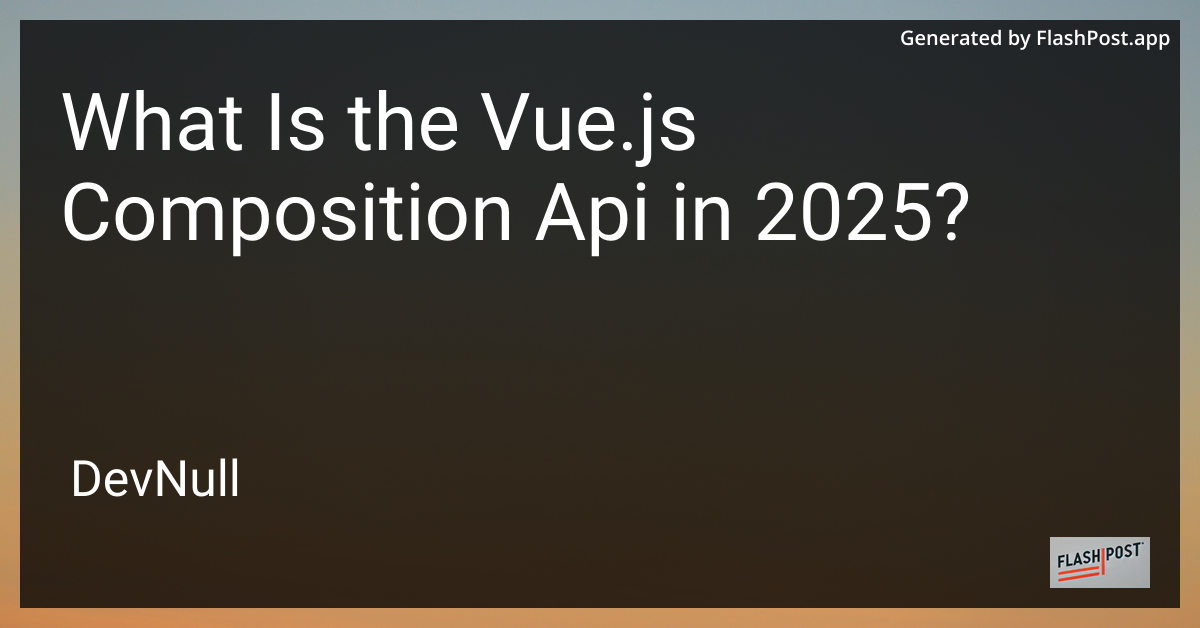

What Is the Vue.js Composition Api in 2025?
title: What is the Vue.js Composition API in 2025? date: 2025-04-12
The JavaScript landscape has continued to evolve, and as of 2025, the Vue.js Composition API has solidified its place as a powerful feature for building scalable and maintainable applications. In this article, we will delve into what the Composition API brings to the table, its benefits, and how it has transformed the way developers build applications with Vue.js.
Understanding the Vue.js Composition API
The Vue.js Composition API, introduced in Vue 3, provides an alternative approach to managing component logic. It enables developers to organize and reuse code more effectively by utilizing composable functions rather than relying solely on the component options API — an approach familiar to those with a background in reactive programming and similar to patterns used in React hooks.
Key Features of the Composition API
-
Reusability: One of the standout features of the Composition API is its ability to promote code reusability. By moving logical concerns out of single-file components and into composable functions, developers can easily share and reuse logic across different parts of an application.
-
Scalability: As applications grow in complexity, managing state and behavior within components becomes cumbersome. The Composition API simplifies logic organization, making it straightforward to scale applications without the infamous complexities associated with monolithic component files.
-
Readability: With the ability to encapsulate logic within functions, developers can create self-contained, readable, and modular pieces of code. This leads to cleaner, more maintainable codebases and reduces the cognitive load when reading through or debugging existing code.
How the Composition API Works
The Composition API consists of a set of reactive primitives and lifecycle hooks. Here’s a quick overview of some commonly used aspects:
-
Reactive variables: Using
refandreactive, developers can easily create reactive state variables, offering an efficient way to track changes within the application’s UI. -
Computed properties: These are defined using the
computedfunction and allow developers to create properties derived from reactive state variables, updating automatically when dependencies change. -
Watchers: With the
watchfunction, developers can monitor changes to reactive variables and perform side effects in response, providing a more controlled way to handle complex state updates.
Adoption and Community Support
Since its inception, the Composition API has seen widespread adoption, and by 2025 it is a staple in the Vue.js community. Due to its flexibility in state management and logic abstraction, it has encouraged developers to build more dynamic, maintainable applications. Over the years, an extensive ecosystem has developed around it, including plugins, libraries, and community-driven best practices.
Resources and Further Reading
To further enhance your understanding and skills in Vue.js and the Composition API, check out these valuable resources:
- Learn about refreshing canvas elements in Vue.js: Vue.js
- Explore how to integrate multiple object IDs into MongoDB using Vue: Vue.js
- Discover how to effectively get CSS working with Webpack in Vue.js projects: Webpack Vue.js
Conclusion
The Vue.js Composition API continues to shape the way developers approach application architecture in 2025. Its composability, scalability, and enhanced readability make it an invaluable tool in modern web development. As developers embrace its paradigm, the Composition API is likely to drive innovation and productivity in the Vue ecosystem for years to come.
